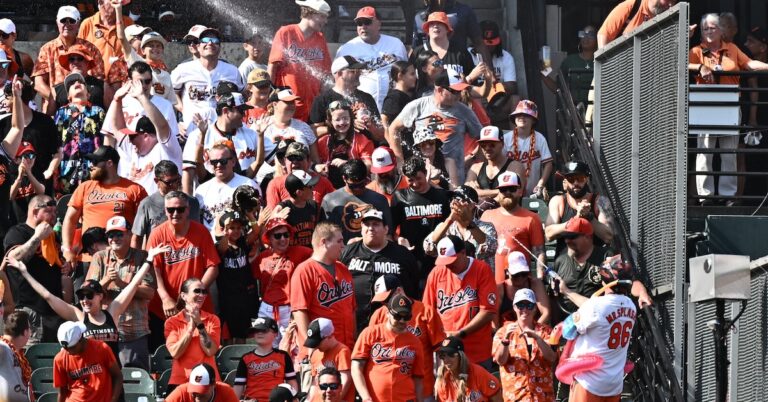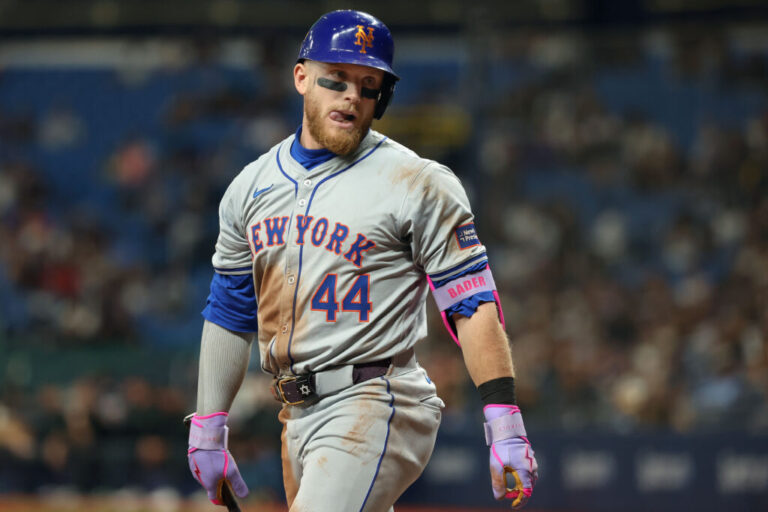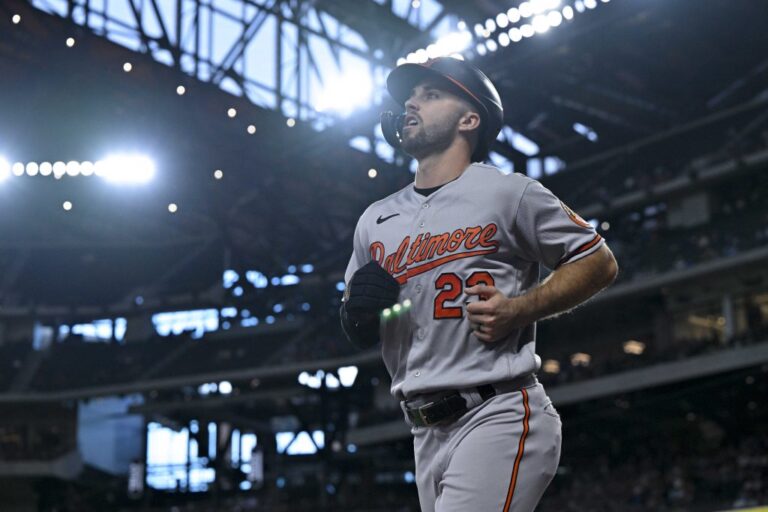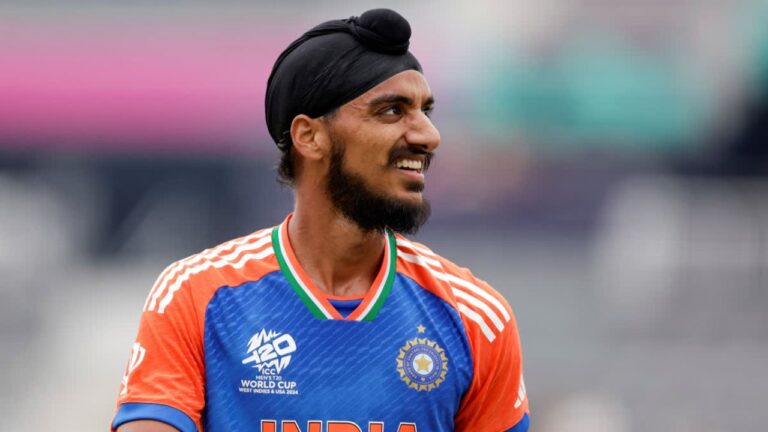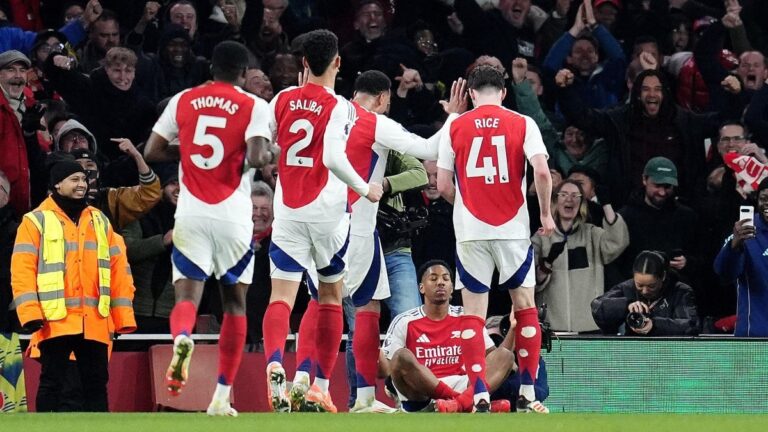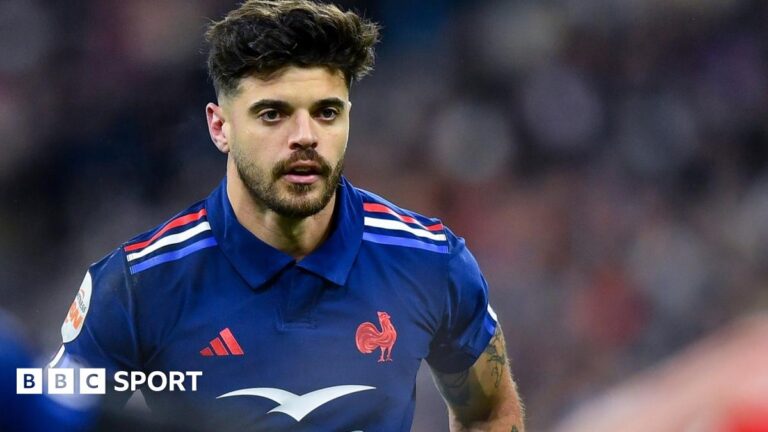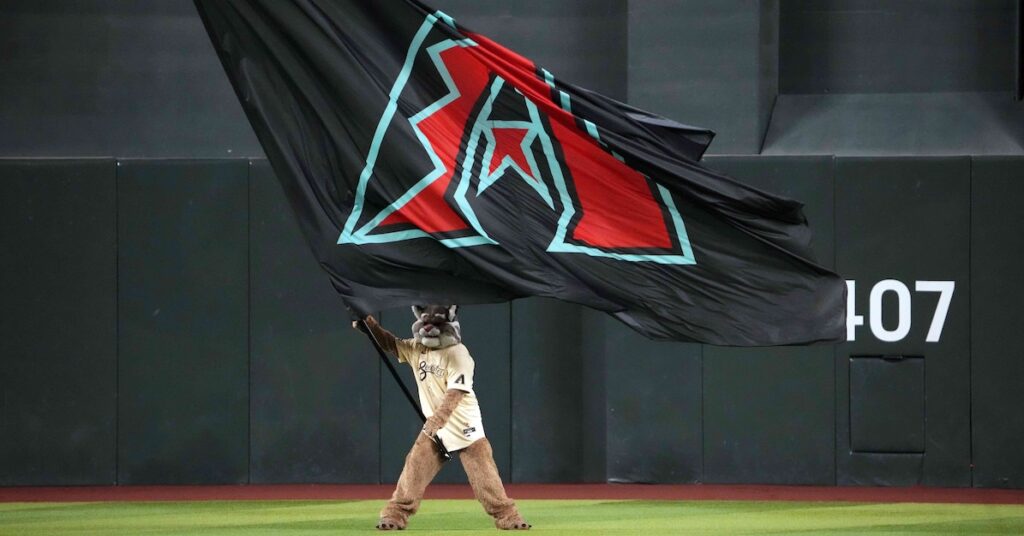

Today, we released the first run of our playoff odds for the 2025 season. With both the ZiPS and Steamer projections loaded in and playing time projections added to the mix, the FanGraphs supercomputer (okay, fine, our cloud services account) can get cranking and spit out some predictions. As is customary, I’ll walk through my first thoughts on them, while later today, Michael Baumann will contribute his own takeaways on the teams most likely to surprise our model. Let’s quickly walk through the process, and then get to the takeaways.
The model itself remains simple. We use those aggregated production and playing time numbers I mentioned earlier to create team-level projections, then use BaseRuns to turn individual outcome projections into scoring and run prevention. That gives us team strength against a neutral opponent. We use those values to simulate the season 20,000 times. The odds are a summary of those simulations as of earlier this morning. That might sound intuitive, but intuition doesn’t always match reality, so let’s go division-by-division to look at how our model got there and what I think of it.
The AL East Is as Outrageous as Always
All five AL East teams project for records above .500. Not by a ton – we’re not particularly excited about the Rays or Blue Jays this year – but there are no true weak links in this division. Our model considers the Yankees the third-best team in baseball in terms of their playoff odds, but thinks they’ll have their work cut out for them in a division where every team has a reasonable shot at playing in October.
The Yankees were a question mark heading into the offseason – with Juan Soto gone, their team is going to look much different than last year. But between adding another ace in Max Fried, trading for Devin Williams, Fernando Cruz, and Cody Bellinger, and shoring up last year’s weak point of first base by signing Paul Goldschmidt, they’ve done a good job of keeping the team around Aaron Judge dangerous and playoff-ready. This isn’t a case of an obvious and uncontested favorite, but this is a good team, one we project to score the most runs and allow the fewest in a difficult division.
Second place is up for grabs, and I want focus on the Red Sox and Orioles to make note of how our model handles converting WAR into projections. Notably, it doesn’t. It doesn’t use WAR as an input at all, in fact. Instead, WAR is downstream of the outcome-level projections, just like BaseRuns is. Here’s how I think about it. A full projection for a major league team has a ton of variables. Singles, doubles, strikeout rate, baserunning, receiving, fly ball rate, the list goes on. You could try to distill those into one number — that’s WAR. You could also try to figure out how a collection of players will score and prevent runs — that’s BaseRuns. They’re taking the same raw data, putting it through their rigorous transformational calculations, and coming up with slightly different answers. This year, we’re actually running a parallel, WAR-based playoff projection, which David Appelman described here.
To wit, as measured by WAR, we project the O’s as five wins better than the Red Sox. But when you look to BaseRuns, we think the Sox are roughly a win better than the O’s. That’s strange! It comes down to a few things. First, there’s a synergy effect. We think that the Orioles’ offense will be slightly less effective than you’d expect if you merely summed up the individual options. (That’s minor in the grand scheme of things, to be clear; we still think they’re great on that side of the ball.)
Second, WAR treats all contributions as equal, but BaseRuns operates based on expected record, which doesn’t. Outscoring your opponent by 50 runs, 650-600, is likely to lead to more wins than outscoring them 850-800. The O’s have one of the best offenses in baseball. They also have the worst pitching staff of any playoff contender. They’re going to end up in shootouts, and it just makes sense that playing a lot of 6-5 games gives you less margin than playing a lot of 4-3 games. BaseRuns accounts for that imbalance in its formulation of opponent-neutral winning percentage. WAR does not. How could it? It’s just counting up the runs and turning them into wins at a linear rate.
Oh yeah, and our current calculation of BaseRuns doesn’t include framing. It’s pretty tough to squeeze into the model, and we haven’t figured out how (if you have any ideas, you know where I write). That’s a win and a half that BaseRuns isn’t accounting for; Connor Wong is meaningfully worse than Adley Rutschman when it comes to getting extra strikes. I look at these odds as a tossup, and I’ll also note that the O’s will have an easier time improving at the deadline, because the pitching gives them a clear weakness to upgrade.
As I mentioned, the Rays and Blue Jays also play in this division, which is unfortunate for them, because I think either could win the AL Central. Heck, Toronto is much closer to Detroit than it is to any team in the East — maybe they should try to move! Perhaps the Rays and the Jays can take some comfort in the fact that there are Wild Card berths very much up for grabs in the AL. Sum our odds up, and no division projects for more playoff teams than the AL East. The road to get there, though? It’s going to be rough.
The Guardians?!
I don’t know what to make of our AL Central projection. Most of it makes sense – no one’s amazingly good, the White Sox are the worst team in baseball, and the Twins are better than last year’s collapse would suggest. But I don’t see Cleveland as the fourth-best team in the division, despite what the model says.
Why is it so down on their chances? In a word, the offense. The Guardians’ offense was middling last year, with component statistics worse than that. They traded one of their best hitters, Josh Naylor, away this winter. They also traded Andrés Giménez, one of their better players, and got scant major league help in the deal; Luis L. Ortiz is the only player acquired in the de facto three-team trade who we think will play for Cleveland in the majors this year, and he’s a fourth starter. There are few teams across all of baseball, never mind playoff teams, that have a worse offensive unit, even with a few stars at the top of the lineup.
That’s a lot of work for the pitching staff to pick up. The Guardians relied on their bullpen to a huge extent last year, and the bullpen delivered. But it’ll need to be excellent again this year, while picking up a huge innings workload, to keep this team afloat. The starters are once again a dicey proposition. After Tanner Bibee, who I love, there are a lot of question marks here.
Still, I’m skeptical of the model’s view that Cleveland’s median outcome is below .500. Between the relatively soft division, the addition of Carlos Santana, and two Top 100 prospects who could debut this year and might provide an offensive jolt, I think there’s more upside here than the model suggests. The broad point, though, is a good one. If you didn’t know this team won 91 games in 2024, you’d look at it and wonder what the fuss was.
As I said, the rest of the division largely tracks with my expectations. The Twins might have had a boring winter, but they have a solid offense, some interesting young contributors, and a reasonable starting rotation. The Tigers have an even worse offense than the Guardians, but they have one of the best few pitchers in baseball so they might be able to make it work. The Royals have Bobby Witt Jr. and three great starters; the rest is up in the air. This should be a fun division in 2025, and certainly a contested one.
Wild, Wild AL West
Three teams within a win of first place? It almost happened in 2023, when the Astros and Rangers won 90 games and the Mariners 88. We think the division will be close like that again, despite uninspiring offseasons from Seattle and Houston. The A’s and Angels are clearly a step behind this top trio, though Sacramento’s respectable projection, in its first season as a big league city, is a breath of fresh air.
I’m surprised to see the Astros so high. They traded Kyle Tucker away and lost Alex Bregman to free agency. The model likes their offense quite a bit, though. Yordan Alvarez is great, Jose Altuve is ageless, and Christian Walker stepping in at first base should provide a huge boost relative to last year’s numbers. Heck, even the Tucker trade was less of a strict downgrade than I’m making it out to be; Isaac Paredes seems tailor-made for Houston’s snug left field dimensions. For me, this model is a useful sanity check. I’m down on the Astros’ chances relative to the projections, but there’s still a lot to like about this team. That might be the most useful part of this whole exercise. Winter vibes are strong, but the model cares quite a bit about past production too, something that’s easy to overlook when you’re thinking mainly about personnel changes.
The Mariners are seemingly perpetually competitive without ever assembling a reasonable offense. We think their pitching staff is one of the best in baseball, and they still play in an offense-suppressing stadium. We have them second only to the Dodgers in run prevention. In terms of offense, though, we have them tied with the Guardians for sixth-worst in the majors. It’s the same story in Seattle, and even with many of the same characters — no real offseason additions, few meaningful subtractions. If Julio Rodríguez returns to superstar form, I think this offense will be acceptable, but otherwise they’re looking at a lot of frustrating 3-2 losses.
Meanwhile, the Rangers are the division favorites, at least nominally; their odds are roughly two percentage points higher than Seattle’s. They’re mostly running last year’s squad back, with two major exceptions. First, we’re expecting mostly full seasons from Jacob deGrom, Tyler Mahle, and Jon Gray. We’re not talking 200 innings for any of them – the highest innings projection is Mahle’s 141 – but it’s a lot more than the 126 the three combined for in 2024. Add in contributions from the Vanderbilt duo of Kumar Rocker and Jack Leiter, and the Rangers will have an excellent pitching staff when healthy.
That just leaves the offense, and while new additions Joc Pederson and Jake Burger are going to get a lot of the attention, the real question is whether the existing team can bounce back. The Rangers had a surprisingly flat year at the plate, finishing 18th in the majors in runs scored; they were third in the league in 2023 when they won the World Series. The model thinks this squad is primed for a rebound, and I do too. Even if Adolis García is cooked, there’s just so much talent here. Forget 2024 — the computer and I agree that this lineup is formidable.
The Braves Still Have It
Last season was a nightmare for Atlanta. When I wrote about intelligently considering depth, I used the Braves as an example of a team that would still be competitive even if it lost its three best players for most of the year. That basically came to pass; Ronald Acuña Jr. and Spencer Strider barely played, and Austin Riley, Ozzie Albies, Sean Murphy, and Michael Harris II all missed more than a month of play. Even Chris Sale’s Cy Young season ended in injury; he didn’t pitch during the Braves’ brief postseason run thanks to back spasms. All that, and they won 89 games anyway. This is a very good team.
The Phillies and Mets are no slouches, of course. We have all three NL East powerhouses among the top seven teams in the majors in terms of playoff odds, and top six in terms of winning percentage against a neutral opponent. Of the two, I like the Mets’ chances of winning the division slightly more despite the model giving them worse odds, but it has less to do with the roster as currently constructed and more to do with potential upgrades. The Phillies look maxed out to me – their starters are among baseball’s best, their bullpen is strong, and they have seven-ish established offensive players who aren’t going anywhere. Unless they can do a ton of upgrading in the outfield, probably including finding someone to take Nick Castellanos off their hands, this is who the Phillies are.
The Mets, on the other hand, have all kinds of holes. The rotation could use at least one more arm, preferably an elite option to round out their playoff rotation. Brett Baty probably isn’t a big league-caliber third baseman, I’m sorry to say. Jose Siri was available essentially for free this offseason. Jeff McNeil is on the downslope of his career. The bottom third of their lineup should be trivially easy to improve on. Combine that with a GM known for his ability to make in-season improvements, and I think the Mets have a better chance of turning in a spectacular season, even if I agree that the Phillies look a hair better at present. Realistically, though, this is Atlanta’s division to lose, just like it seems to be every year.
Is ‘Ew’ a Takeaway?
I’m not going to sugarcoat it: The NL Central looks bad. There are no abjectly terrible teams here, so I don’t think it’s going to challenge any records for worst division in history, but there simply isn’t much top-end talent. The Brewers and Cubs are the only two clubs that look like legitimate championship contenders, and then only barely.
The Brewers won the division by a mile in 2024, but they did nearly nothing to improve their team. The closest thing to an upgrade here is trading Devin Williams for Nestor Cortes and Caleb Durbin, and that’s more of a sideways move. Meanwhile, Willy Adames departed for San Francisco, and a slew of depth players departed in free agency or were non-tendered. Individually speaking, losing Joe Ross, Bryse Wilson, Hoby Milner, Frankie Montas, Colin Rea, Gary Sánchez, and Wade Miley might not seem all that important. But all of those guys? That’s so many people! Pitching depth will be particularly important for Milwaukee this year, and a lot of that depth just departed.
The Brewers’ inactivity left a bit of a power vacuum at the top of the division, and the Cubs rose to the occasion, enough so that we now have them as division favorites. They made by far the biggest splash of any NL Central team this winter by trading for Kyle Tucker. Heck, they might have made the second-biggest splash by trading for Ryan Pressly. The Cubs’ vaunted farm system has mostly been churning out depth pieces and part-timers in recent years, but now they have a superstar anchor to make everyone else look a little bit better. The bullpen? It’s not great, which is why Pressly was such a nice addition. The rotation? I feel similarly; when you’re signing Colin Rea and expecting him to make meaningful contributions, it’s probably not one of the best units in the game. But in this division, Tucker, Dansby Swanson, and a reasonable supporting cast might be enough.
The rest of the division is downer after downer. The Cardinals? They’re third by default despite expressly announcing their intention to take a step back at the major league level. This feels like a team going nowhere; they failed in their quest to trade Nolan Arenado, but they’re also not trying to compete around him, which means they’re basically marking time until Chaim Bloom takes over. The Pirates have a former Boston executive of their own in Ben Cherington, and he seemed to like St. Louis’ plan of sitting out free agency, because his biggest signing was arguably Adam Frazier. Feels like quite a waste of Paul Skenes to me, and the model agrees, giving them a scant 20% chance of getting to the playoffs despite an abysmal division and a transcendent talent.
That just leaves the Reds, who I’m surprised to see projected in last place. I don’t know if Gavin Lux, Jose Trevino, Brady Singer, and Taylor Rogers will all work out, but I’d bet on at least one of them exceeding expectations. A full year of Matt McLain and an encore performance from Elly De La Cruz should make Jonathan India’s departure bearable. You can squint and see a very good team here. The model is skeptical of their pitching, particularly their bullpen, and it’s weighing down a perfectly reasonable offense. This feels harsh to me; I doubt their bullpen will be quite as bad as expected, if only by virtue of in-season turnover. That doesn’t make them amazing, but it definitely puts them right in the mix in a desultory division.
Snakes Alive
We get it, the Dodgers are great. We have them down for the best offense in baseball, as well as the best pitching staff. That’s hardly surprising, though. I’m more interested in the Diamondbacks, who boast the fifth-highest projected win total in the majors and fifth-highest playoff odds too. Signing Corbin Burnes was obviously a coup, and adding Josh Naylor should keep the offense humming even after losing Joc Pederson in free agency. It feels weird, because the last time we saw them in the playoffs they were plucky underdogs, but these Diamondbacks are for real. They have multiple elite offensive players, two capital-A aces, and a deep rotation that will likely see Jordan Montgomery shipped out for surplus pieces before too long.
It feels weird to see the Padres meaningfully behind the Diamondbacks, but in looking through these projections, I’m starting to feel the downside of A.J. Preller’s quantity-for-quality trading style. The bottom of this lineup is rough. We’re talking worst left field situation in baseball rough. A catching tandem composed of guys better suited to being backups rough. Batting your DH ninth rough. Sure, the stars are bright, but the whole idea of stars and scrubs is that you can cobble together average players around the stars more easily, and San Diego absolutely hasn’t done that.
The rotation is a similar deal. The top three names? Glitzy, marquee-worthy. The next two, and the group after that? Let’s just say that if the top trio misses much time, this projection has meaningful downside risk. That’s even before considering what happens if they trade Dylan Cease, as has been widely rumored. The Padres ended last list cycle with the thinnest farm system in baseball, with just three prospects garnering a 45 FV or better on our updated 2024 report, the fewest in baseball. That’ll happen when you trade marginal prospects at every turn to avoid throwing in top names in your dealings. It has worked for the Padres for a while, but you can see the downside in this year’s projections.
Finally, our projections see the Giants as competent bordering on good. I was surprised to see them so close to San Diego in playoff odds, and if you’ll remember from up above, these BaseRuns-based odds don’t take framing into account. The Giants have the best receiver in baseball in Patrick Bailey, while the Padres alternate between two stone-handed options. I’m not surprised by the top or bottom of the NL West – but the middle three are all intriguing in their own right.
